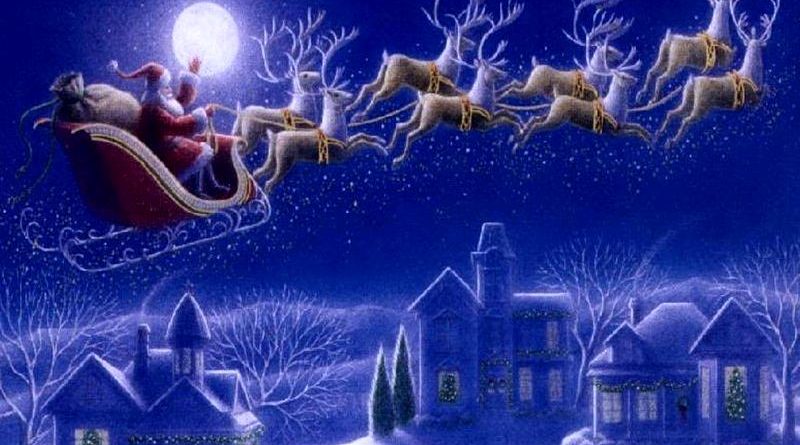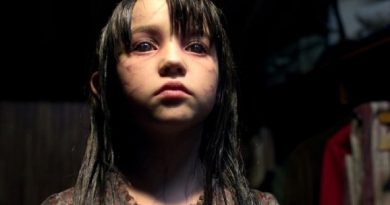Christmas – Urban Legends and Myths
Christmas Gift Giving Superstitions:
It was at one time considered bad luck to give a pair of scissors or a knife as a gift because it was feared that the act would “cut” the friendship in half. Therefore, knives were especially never given as wedding gifts, as it was believed they would lead to a broken marriage. Also, never give anyone a pair of shoes as a Christmas gift because they would make the person you give them to walk away from you. When you give someone a gift of a wallet or purse, be sure to put some money into it, even if only a coin, to ward off bad luck. At one time, bakers would throw in an extra roll when you bought a dozen as a “gift” in case any of the other rolls were too small. This “gift” became known as the baker’s dozen.
Jesus was born on December 25…
The idea of celebrating the birth of Christ on December 25 was first suggested early in the fourth century. This was a clever move on the part of Church fathers, who wished to eclipse the December 25 festivities of a rival pagan religion.The celebration of Christmas took permanent hold in the Western world in 337 with the Roman emperor Constantine. Christianity had become the official state religion in 313 AD. By 354, Bishop Liberius of Rome reiterated the importance of celebrating not only Christ’s death but also his birth.
The angels Sang at Christmas…
The Bible never says that the Angels sang! Read it closely!!) The Bible tells of three wise men who travelled from afar on camels to visit the infant Jesus as he lay in the manger.(Mathew 2:1 tells us: “Now when Jesus was born in Bethlehem of Judaea in the days of Herod the king, behold, there came wise men from the east to Jerusalem . . . “. That is the extent of it. There is no mention of THREE wisemen and no mention of camel! Also, Matt 2:11 states “And when they were come into the house, they saw the young child with Mary his mother, and fell down, and worshipped him . . . “. Note that it mentions a child in a house, rather than a baby in a manger… so this is a postbirth event.
The modern image of Santa Claus was created by Coca-Cola…
Haddon Sundblom drew his first Santa portrait for Coca-Cola in 1931… which popularized an existing image of Claus. In 1804, the New York Historical Society was founded with Nicholas as its patron saint, reviving the Dutch tradition of St. Nicholas as a bringer of gifts. In 1809, Washington Irving published his satirical A History of New York, by one “Diedrich Knickerbocker,” poking fun at New York’s Dutch past, St. Nicholas included… in Dutch, “Sinterklaas”. Irving revised his History of New York in 1812, adding details about Nicholas’ “riding over the tops of the trees, in that selfsame waggon wherein he brings his yearly presents to children.” In 1821,William Gilley wrote a poem about a “Santeclaus” who dressed all in fur and drove a sleigh pulled by one reindeer. On Christmas Eve of 1822, Clement Clarke Moore, wrote down and read to his children a series of verses; his poem was published a year later as “An Account of a Visit from St. Nicholas” …more commonly known today by its opening line, “‘Twas the night before Christmas . . .”


In 1822, Clement Clarke Moore wrote down in his “An Account of a Visit from St. Nicholas” …more commonly known today by its opening line, “‘Twas the night before Christmas . . And he whistled, and shouted, and called them by name. “Now Dasher! now, Dancer! now, Prancer and Vixen! On, Comet! on, Cupid! on Donder and Blitzen! To the top of the porch! to the top of the wall! Now, dash away! dash away! dash away all! ” The song about Rudolf the Red Nosed Reindeer first made the mistake in Donder’s and Vixen’s names!
The suicide rate increases significantly during the winter holiday season…
1985 Mayo Clinic report: “Fewer suicides than expected may occur on weekends and major holidays because it may be easier to repress troublesome thoughts during these times of greater social interaction.”
Poinsettia plants are poisonous to humans…
The poinsettia poison myth had its origin when a young child of an Army officer in Hawaii died of poisoning, incorrectly assumed to be a poinsettia leaf. A 50 lb. child would have to eat more than 1.25 lbs. or 500 – 600 leaves , according to the POISINDEX Information Service. Handbook of Poisonous and Injurious Plants lists the symptoms of eating Poinsetta as vomiting as a side effect of ingesting otherwise harmless poinsettia leaves.
Man dressed as Santa Claus gets stuck in a chimney and dies..
This story has been around for almost as long as the Santa Claus legend itself. It is a variation of the motif of juxtaposing an otherwise happy occasion with a senseless tragedy. Note Ella Fitzgerald’s “Santa Claus Got Stuck in My Chimney,” Jimmy Boyd’s “Santa Got Stuck in the Chimney,” and Gisele MacKenzie’s “Too Fat for the Chimney.”
Candy canes were created to symbolize Jesus
Their shape representing the letter “J” and their colors standing for the purity and blood of Christ… and were started in Indiana Candy canes were most assuredly NOT created by “a candymaker in Indiana” who “stained them with red stripes to show the stripes of the scourging Jesus received.” Candy canes have been in existance long before there ever was an Indiana! They initially bore neither red coloration nor striping the red stripes were a feature that did not appear until a few hundred years later, at the beginning of the 20th century. More elaborate Christmas coloration and decoration have been added to these candies in recent years … for purely marketing purposes.
‘Xmas’ is a modern, disrespectful abbreviation of the word Christmas…
X is a substitute for the Greek, Chi, which was an early church representation of Christ. It has been around for a long time and had no meaning of disrespect.
Rudolph the Red-Nosed Reindeer was created for Montgomery Ward department stores…
Rudolph began in 1939 when the Chicago-based Montgomery Ward company (a chain of department stores) asked one of their writers, 34-year-old Robert L. May, to come up with a Christmas story which could be given away to shoppers as a promotional gimmick. The chain had been been buying and giving away coloring books for Christmas every year. To save money, they wanted to create their own booklet. It was loosely based on the Ugly Duckling.
Christmas cards have been around since 1843…
English school children made their own and sent gave them to each other before this date. The first formal card was designed in 1843, by J.C. Horsley, in England. It was lithographed on dark cardboard. It consisted of a color print of a party of grownups and children with glasses of wine raised in a toast over the words “A Merry Christmas and a Happy New Year to you.” Since it only cost 1 penny to send a card at that time, the custom caught on quickly!
The song, The Twelve Days of Christmas, was actually written to contain the basic beliefs of Catholicism, masked in secular words.
The concept behind this urban legend is that this Christmas song was originally created as a coded catechism that was used by Catholics to teach their children. However, it’s not true. Here is an example from one of the most popular versions going around:
— Begin Portion of Urban Legend Email
It is a good deal more than just a repetitious melody with pretty phrases and a list of strange gifts.
Catholics in England during the period 1558 to 1829, when Parliament finally emancipated Catholics in England, were prohibited from ANY practice of their faith by law – private OR public. It was a crime to BE a Catholic.
“The Twelve Days of Christmas” was written in England as one of the “catechism songs” to help young Catholics learn the tenets of their faith – a memory aid, when to be caught with anything in *writing* indicating adherence to the Catholic faith could not only get you imprisoned, it could get you hanged, or shortened by a head – or hanged, drawn and quartered, a rather peculiar and ghastly punishment I’m not aware was ever practiced anywhere else.
— End Portion of Urban Legend Email
Here is a list of what the symbols supposed represented:
– A partridge in a pear tree. Said to symbolize Jesus Christ, a mother partridge protecting her nestlings (Jesus’ followers).
– Two turtle doves. The Old and the New Testaments.
– Three French hens. The Christian virtues of faith, hope and charity.
– Four calling birds. The four Gospels, Matthew, Mark, Luke and John.
– Five gold rings. The first five books of the Old Testament telling the story of man’s fall from grace.
– Six geese a laying. The six days of creation.
– Seven swans a-swimming. The seven gifts of the Holy Spirit.
– Eight maids a-milking. The eight Beatitudes.
– Nine ladies dancing. The nine fruits of the Holy Spirit.
– Ten lords a-leaping. The Ten Commandments.
– Eleven pipers piping. The eleven faithful disciples.
– Twelve drummers drumming. The twelve points of belief in the Apostles’ Creed.
According to historians, there is no evidence to suggest that The Twelve Days of Christmas was written as a covert catechism. Further, these symbols were all shared by both Catholics and Anglicans, so there would have been no point in hiding these symbols in a song, since these beliefs could have been taught openly without betraying someone as Catholic.



